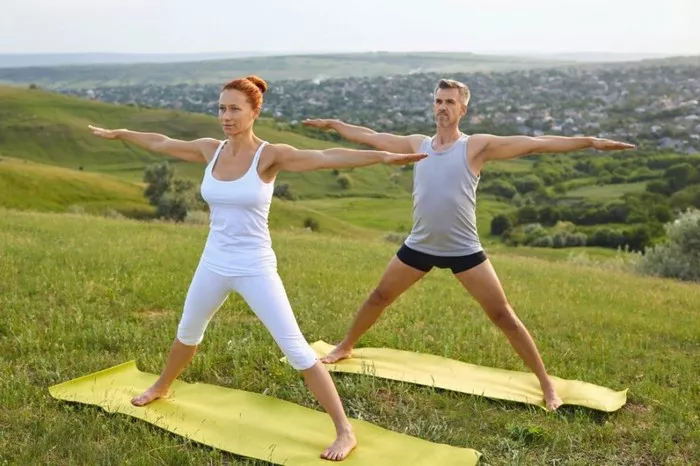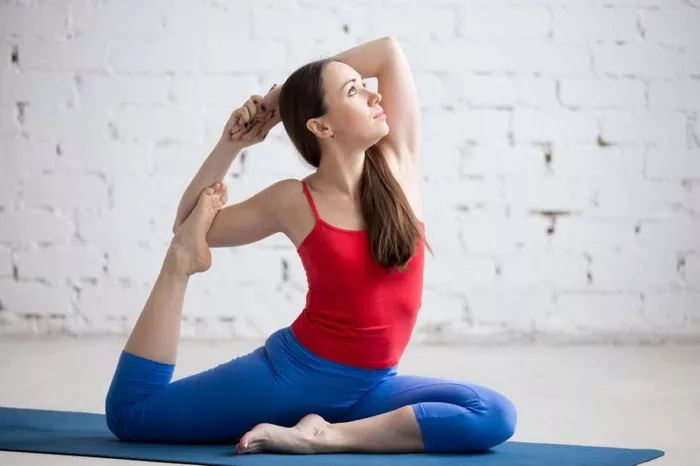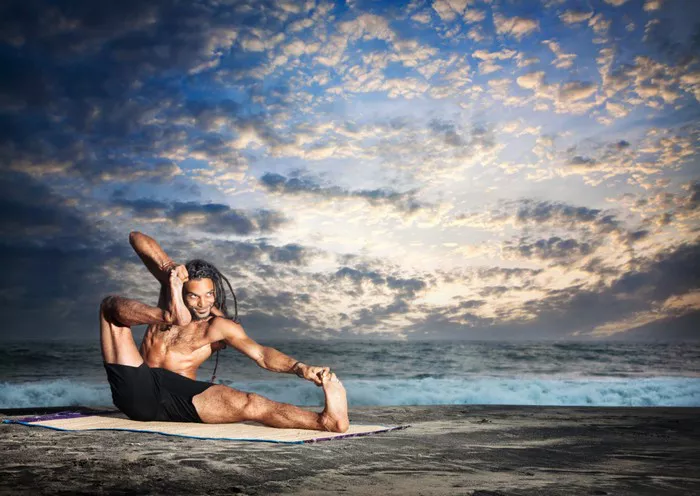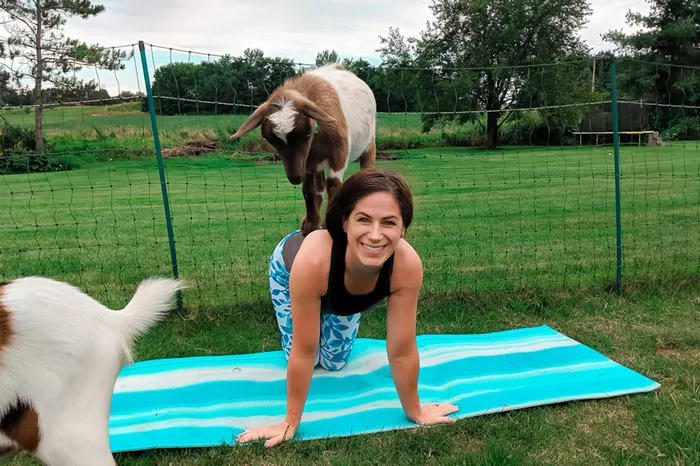Yoga has become one of the most popular and accessible forms of physical activity across the world. It offers an array of health benefits, from improving flexibility and strength to reducing stress and promoting mental clarity. Among the many asanas (yoga poses), Fish Pose, or Matsyasana, is often regarded as a deeply therapeutic posture that opens up the chest, stretches the spine, and enhances respiratory function.
However, as with any form of exercise, yoga is not suitable for everyone, and certain individuals may need to avoid specific poses due to their unique health conditions or physical limitations. Fish Pose is no exception. While this posture has many benefits, there are specific groups of people who should refrain from practicing it, or at the very least approach it with caution. In this article, we will explore the people who should avoid Fish Pose, the reasons why it might be contraindicated, and how to safely practice it when necessary.
Understanding Fish Pose (Matsyasana)
Before diving into who should avoid Fish Pose, it’s essential to understand what this posture entails and what benefits it offers.
Fish Pose is a backbend that is typically practiced after shoulder-opening poses and seated postures to deepen the stretch of the upper body. It is often referred to as the “destroyer of all diseases” due to its potential to alleviate physical ailments. In Fish Pose, the practitioner lies on their back, with the chest lifted and the legs extended, while arching the spine. The crown of the head gently touches the floor, and the arms are either extended to the sides or placed beneath the hips, palms facing down to support the lower back.
Some of the key benefits of Fish Pose include:
Opens the chest and throat: This pose helps in expanding the chest and throat area, improving lung capacity and encouraging better breathing.
Increases spinal flexibility: Matsyasana helps in stretching the spine, improving flexibility and releasing tension from the back and neck.
Stimulates the thyroid and parathyroid glands: The positioning of the head and neck is believed to activate the thyroid, promoting healthy hormone production.
Improves posture: By strengthening the upper back and opening the chest, Fish Pose helps improve overall posture.
Alleviates stress: Like many yoga poses, Fish Pose helps calm the mind and relieve tension, fostering a sense of peace and relaxation.
Who Should Not Do Fish Pose Yoga?
While Fish Pose is a powerful and beneficial pose for many, it is important to note that it is not suitable for everyone. Certain groups of individuals should avoid this posture due to specific health concerns or limitations. Below are some of the primary groups of people who should refrain from practicing Matsyasana:
1. People with Neck Problems
Fish Pose requires a significant amount of extension in the neck. When performed incorrectly, or if an individual already has neck issues, this can lead to strain or injury. People with the following neck conditions should avoid Fish Pose or perform it only with supervision from a qualified yoga instructor:
Cervical spine issues: Those with degenerative disc disease, herniated discs, or bulging discs in the neck should avoid Fish Pose as the head and neck extension can aggravate the condition.
Neck injury: Individuals recovering from a neck injury or who have had surgery should refrain from this pose, as the pressure placed on the neck could impede healing.
Chronic neck pain: Those with chronic neck pain or tension should either avoid this pose or practice it with extreme caution, ensuring that the neck is properly supported and aligned during the posture.
For those with neck concerns, alternative poses that avoid excessive neck extension, such as gentle stretches or seated postures, should be considered.
2. Individuals with Spinal Conditions
Fish Pose involves a deep backbend that can put considerable strain on the spine. Those with the following spinal conditions should approach this pose with caution or avoid it entirely:
Spondylolisthesis: This is a condition where one vertebra slips out of place over another. Backbends like Matsyasana can exacerbate this condition and potentially worsen the misalignment of the spine.
Spinal stenosis: Spinal stenosis refers to the narrowing of the spinal canal, which can cause pressure on the spinal cord. Backbends can increase this pressure and may lead to discomfort or injury.
Osteoporosis: Individuals with osteoporosis or low bone density should avoid deep backbends that may cause vertebrae compression fractures. Fish Pose can potentially increase the risk of bone fractures due to the deep arching of the spine.
Kyphosis or Lordosis: People with pronounced spinal curvature, such as excessive kyphosis (hunchback) or lordosis (excessive inward curve of the lower back), should avoid Fish Pose or practice it with extra care. These conditions may make it difficult to achieve the correct alignment, leading to unnecessary strain on the spine.
For individuals with spinal conditions, it is crucial to consult a healthcare provider or a skilled yoga instructor to modify the pose to suit their needs.
3. Those with Heart Conditions
Matsyasana involves a deep backbend that opens the chest and stretches the heart region. While this can be beneficial for many, individuals with certain heart conditions should avoid the pose or practice it under supervision. These conditions include:
Heart disease: People with a history of heart attacks, heart surgery, or cardiovascular disease should avoid backbends like Fish Pose, as the pose may cause undue pressure on the heart.
Hypertension (high blood pressure): Fish Pose can increase blood flow to the head and neck, which could potentially exacerbate high blood pressure. Those with hypertension should consult their doctor before attempting this pose, as it may not be suitable for everyone.
Unstable heart conditions: For individuals with arrhythmias, angina, or other unstable heart conditions, Fish Pose may increase the risk of triggering symptoms due to the deep chest opening and pressure on the upper body.
If you have any heart-related concerns, always seek medical advice before attempting challenging yoga poses like Matsyasana.
4. Pregnant Women
Pregnancy is a time when special care must be taken when practicing yoga. While yoga can be a beneficial practice during pregnancy, certain poses, including backbends like Fish Pose, may not be suitable for all stages of pregnancy. Here are some reasons why pregnant women may need to avoid Fish Pose:
Pressure on the abdomen: The deep backbend can put pressure on the abdomen and the growing baby, which may cause discomfort or even pose a risk.
Risk of overstretching: Pregnancy hormones can make the ligaments and joints more flexible, which increases the risk of overstretching. In Fish Pose, the deep arching of the spine could lead to ligament strain or injury.
Balance concerns: As pregnancy progresses, the body’s center of gravity changes, and balance may become more challenging. Fish Pose requires a degree of stability and focus that might be difficult to maintain during pregnancy.
Pregnant women should avoid any pose that could risk their comfort or safety. Modifications, or alternative poses, such as gentle seated stretches, should be considered instead.
5. People with Recent Abdominal Surgery or Injury
Fish Pose requires engaging the abdominal muscles to lift the chest and maintain balance. For individuals who have had recent abdominal surgery, injury, or medical procedures, performing a deep backbend like Matsyasana can strain the abdominal region and delay the healing process. Those recovering from conditions such as:
- Abdominal surgery
- Hernias
- Appendectomy
- C-section (for postnatal recovery)
Should avoid this pose until they have fully healed. Doing so may exacerbate the healing process, and there is a risk of injury or re-opening stitches. Always seek medical approval before engaging in yoga following an abdominal surgery.
6. Those with Shoulder Injuries
Fish Pose requires shoulder mobility and strength to support the body during the backbend. Individuals with shoulder injuries, such as rotator cuff injuries, dislocations, or frozen shoulder, should approach Matsyasana with caution. This is because placing weight on the arms or shoulders in the wrong alignment can exacerbate shoulder pain or injury. People with the following shoulder conditions should avoid Fish Pose or modify it significantly:
- Rotator cuff injuries
- Shoulder dislocations
- Frozen shoulder (adhesive capsulitis)
- Shoulder arthritis
Shoulder injuries can make the arm positions required in Fish Pose extremely challenging and painful, so alternative stretches that do not involve shoulder weight-bearing should be considered.
Modifications for Safe Practice
For those who are able to practice Fish Pose but need to make adjustments due to specific health conditions, there are modifications that can be incorporated into the practice:
Support the neck: If you have neck concerns, place a cushion or bolster under the head and neck for support rather than allowing the head to rest directly on the floor.
Use a block under the chest: If you have spinal issues or find the backbend too intense, place a block or bolster underneath the upper back to reduce the intensity of the stretch.
Gentle variation: Instead of lifting the chest high, practice a gentler version of the backbend by keeping the chest closer to the floor.
Avoid deep arching: For those with spinal issues, focus on a more subtle arch in the back without going too deep, which can strain the spine.
Conclusion
Fish Pose, or Matsyasana, is a wonderful yoga posture with numerous health benefits, especially for the spine, chest, and respiratory system. However, it is important to recognize that it may not be suitable for everyone. People with neck issues, spinal conditions, heart conditions, pregnancy, recent abdominal surgeries, or shoulder injuries should avoid or modify the pose. Always listen to your body and consult with a healthcare provider or a certified yoga instructor before attempting this pose if you fall into any of these categories.
If practiced mindfully and with proper alignment, Fish Pose can be a powerful tool for improving flexibility, posture, and overall well-being. But, like all yoga poses, it is crucial to approach it with care, respect for your body’s limitations, and awareness of any pre-existing health conditions.
Related topics

















